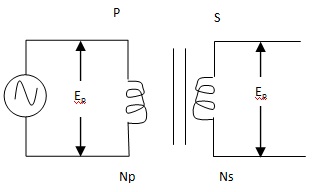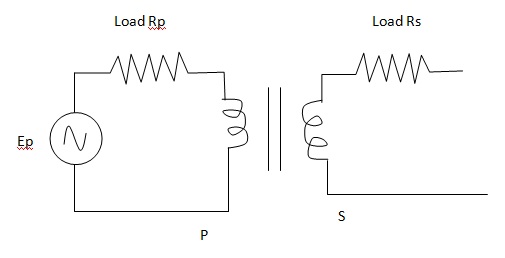Theory Of The Transformer
Theory Of The Transformer Assignment Help | Theory Of The Transformer Homework Help
Theory of the Transformer
1. Transformer on no load
Let NP and NS be the number of turns in the primary and secondary respectively of the transformer. When an alternating emf is applied across the primary, a current flows in its winding. The develops a magnetic flux in the core. Here it is assumed that there are no losses and no leakage of flux. Let Φ = flux linked with each turn of either coil. This magnetic flux is linked up with both the primary and the secondary.By Faraday’s law of electromagnetic induction, the emf induced in the primary is given by
εp = - d (Np Φ) /dt = - Np dΦ/dt
and the emf induced in the secondary,
εs = - d (Ns Φ)/dt = - Ns dΦ/dt
. : εs / εp = Ns /Np .
In an ideal transformer, the resistance of the primary of the primary circuit is negligible and there are no energy losses. So the induced emf εp in the primary is numerically equal to the applied voltage Ep across the primary. If the secondary is an open circuit, its resistance is infinite. So the voltage Es across the terminals of the secondary is equal to the induced emf εs.
Es/Ep = εs/εp = Ns/Np = K, … (1)
Where K is called the turns ratio or transformation ratio of the transformer.
K = Voltage obtained across secondary = No. of turns in secondary
___Voltage applied across primary _____ No. of turns in primary
In a step-up transformer εs > εp and hence Ns > Np.
In a step-down transformer εs < εp and hence Ns < Np.
Let Ip and Is be the currents in primary and secondary at any instant.
In this case power output is equal to power input.
Power in the secondary = power in the primary
Es X Is = Ep x Ip
Ip / Is = Es / Ep = Ns/Np = K. … (2)
Thus, when the voltage is stepped-up, the current is correspondingly reduced in the same ratio, and vice-versa.

(ii) Transformer on load
If the primary circuit has an appreciable resistance Rp, the difference between the applied voltage Ep and the back e.m.f. εp must be equal to the potential drop Ip x Rp in the primary coil, i.e.,Ep – εp = Ip x Rp.
or Εp = Ep – Ip x Rp … (3)
Again, if the secondary circuit is closed having finite resistance Rs, a part of the induced emf εs in the secondary overcomes the potential drop is x Rs. Hence the available P.D. across the secondary is given by
Es = εs - Is x Rs
Or εs = Es + Is x Rs
Hence εs/εp = Es + IsRs /Ep - IpRp = K
Or Es + IsRs = K (Ep – Ip-Rp)
Es = KEp – IsRs – KIpRp
= KEp – IsRs – K2IsRp ( . : Ip = K Is)
= KEp – Is (Rs + K2Rp)
In this case Es/Ep is not a constant but decreases as more current is drawn from the secondary circuit.
